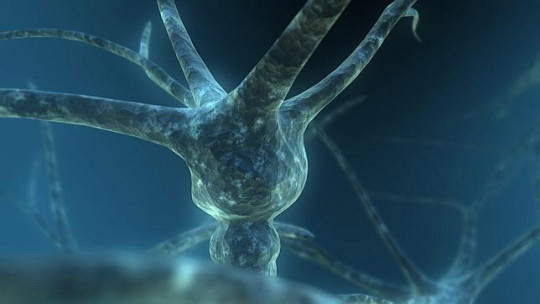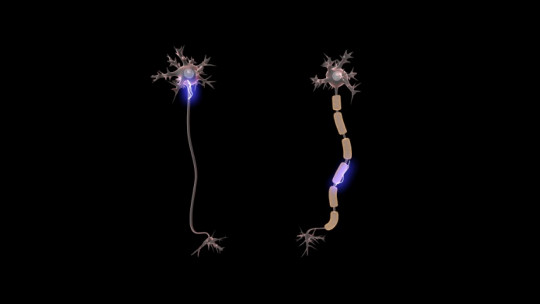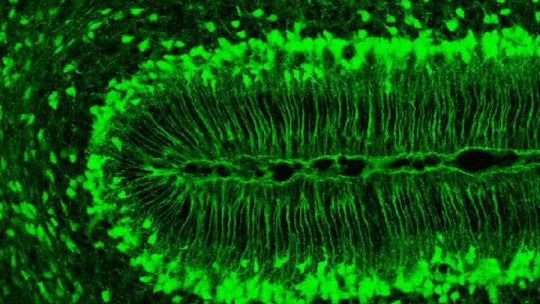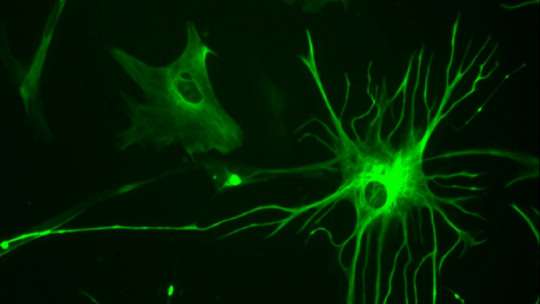All neurons in our body have a life cycle. They are formed, live, perform their functions and finally die and are replaced. In fact, it is something that constantly occurs in different systems of the body.
However, the nervous system is a particular case in which, once in adulthood, hardly any new neurons are produced. And the ones we already have are not going to live forever: little by little and for different reasons, they are going to degenerate and die. It is because of that In this article we are going to talk about neuronal death and the two main processes by which it occurs
What is neuronal death?
The concept of neuronal death refers, as the name itself indicates, to the death of nerve cells known as neurons. This entails a series of far-reaching repercussions, such as the fact that the cell will no longer be able to carry out its function of transmitting information (with the consequent decrease in brain efficiency or even the loss of functions depending on the quantity, area and functions of dead cells).
However, it is not limited to this, and the death of a neuron can also have an effect on neighboring cells: it implies the existence of remains that, although they can generally be eliminated by the system, can also become stay there and interfere with the normal functioning of the brain.
The process by which a neuron dies can vary enormously depending on its causes , as well as the results of said death. It is generally considered that there are two main types of neuronal death: that produced naturally by the cell itself or apoptosis and that produced by injuries or necrosis.
Programmed neuronal death: apoptosis
In general, we tend to consider the death of neurons as something negative, especially considering that once in adulthood, practically no new neurons are produced (although some areas where neurogenesis does occur have been discovered). But neuronal death is not always negative, and in fact throughout our development there are even specific moments in which it is programmed. We are talking about apoptosis.
Apoptosis is the programmed death of the body’s cells , which allows it to develop by getting rid of unnecessary material. It is a cell death that is beneficial (generally) for the body and that serves to develop or to fight against possible damage and diseases (sick or harmful cells are eliminated). This process is characterized by requiring energy to produce, and cannot be carried out in the absence of ATP (adenosine triphosphate, a substance from which cells obtain energy).
At the brain level, this occurs especially at the time of neuronal or synaptic pruning, when a high percentage of the neurons that have been developing during our first years die in order to allow a more efficient organization of the system. Those neurons that do not establish strong enough synapses die because they are not used regularly and those most frequently used remain. This allows our maturation and increased efficiency in the use of mental resources and available energy. Another time when apoptosis also occurs is during aging, although in this case the consequences generate the progressive loss of faculties.
In the process of neuronal apoptosis, the cell itself generates biochemical signals (either by positive induction in which the membrane receptors bind to certain substances or by negative or mitochondrial induction in which the ability to suppress certain substances that would generate the activity of apoptotic enzymes) that cause the cytoplasm and cell membrane to condense and alter, the cell nucleus to collapse and the DNA to fragment. Finally, the microglial cells end up phagocytosing and eliminating the remains of dead neurons, so that they do not interfere with the regulatory functioning of the brain.
A special type of apoptosis is called anoikis in which the cell loses contact with the material of the extracellular matrix, which ends up causing its death by not being able to communicate.
Necrosis: death due to injury
But neuronal death does not occur only in a preprogrammed way as a way to improve the efficiency of the system. They can also die due to external causes such as injuries, infections or poisoning This type of cell death is what is known as necrosis.
Neuronal necrosis is neuronal death caused by the influence of external factors, generally of a harmful nature. This neuronal death is mostly harmful to the subject. It does not require the use of energy, being a passive neuronal death. The neuron is unbalanced by the damage and loses control of its osmosis, rupturing the cell membrane and releasing its contents. It is common for these remains to produce an inflammatory reaction that can generate various symptoms. Unlike what occurs in apoptosis, microglia may not be able to phagocytose dead cells correctly, leaving remains that can cause interference in regulatory functioning. And although over time they are phagocytosed, even if they are eliminated they tend to leave a scar of fibrous tissue that interferes with the neuronal circuit.
It is important to keep in mind that necrosis can also appear if a loss of ATP occurs in an apoptosis process. Since the system needs energy to produce apoptosis, if it is left without it, neuronal death cannot occur in a pre-programmed manner, so although the neuron in question dies, the process cannot be completed, which will cause the death in question to be necrotic. .
Neuronal necrosis can occur for multiple reasons. Its appearance is common in processes such as hypoxia or anoxia , strokes, head injuries or infections. Neuronal death due to excitotoxicity is also well known, in which neurons die due to the excessive influence of glutamate (the main exciter of brain activity), as occurs in some drug overdoses or drug intoxication.
The influence of neuronal death on dementia and neurological disorders
We can observe neuronal death in a large number of situations, not all of them clinical. However, it is worth highlighting a recently discovered phenomenon in the relationship between dementia and neuronal death.
As we age, our neurons age with us, dying throughout our lives. Microglia are responsible for protecting the nervous system and phagocytosing the remains of dead neurons. (through apoptotic processes), so that although faculties are lost, the brain usually remains healthy within the limits of normal aging.
However, recent research seems to indicate that in people with dementia, such as Alzheimer’s, or epilepsy, microglia do not perform their function of phagocytosing dead cells, leaving remains that generate inflammation of the surrounding tissues. This means that even if brain mass is lost, there are still remains and scar tissues that, as they accumulate, increasingly harm the performance of the rest of the brain, in turn facilitating greater neuronal death.
Although these are recent experiments that must be replicated to obtain more data and falsify the results, these data can help us better understand the process by which the nervous system deteriorates, so that we can establish better strategies and treatments that alleviate neuronal destruction. and perhaps, in the long run, to stop diseases that were incurable until today.









